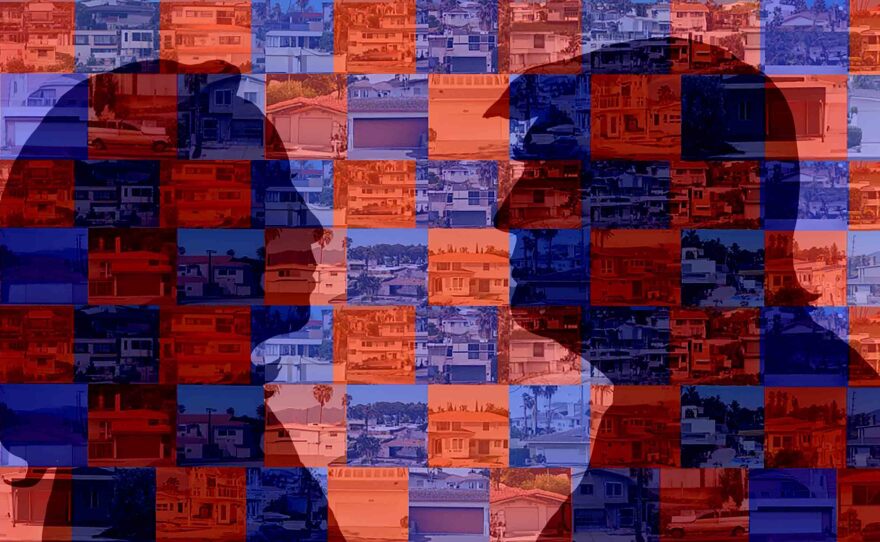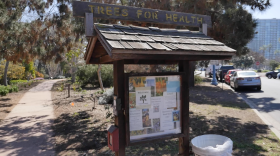For much of the runup to the 2024 presidential election, Democrats and supporters of Vice President Kamala Harris made the case that this was the most important election of this generation, and it was vital that people who support Democrats should vote.
It didn’t resonate in San Diego and Imperial Counties. While California and the San Diego region did support Harris’ campaign, voters did not turn out for the Democratic ticket in near the numbers they did before and in Imperial County, voters preferred Republican former President Donald Trump for the first time in more than 30 years.
Now, two months later, Democratic leaders across San Diego and Imperial Counties are grappling with what it means that so many people decided the party is no longer their preferred one or that they just didn’t want to vote this time, which became a de facto endorsement of Trump.
He didn’t just benefit, however, from lack of turnout for Harris. Some areas of San Diego and Imperial Counties turned out for him in greater numbers than before.
The facts
Looking at percentages, Trump did better in San Diego than he did in 2020. Looking at actual votes, though, provides a little more nuanced and interesting story. San Diego County had more voters in 2024 than it did in 2020, yet Trump received about 7,000 fewer votes in San Diego County than he got in 2020.
The turnout for Harris was much, much worse. In 2020, President Joe Biden, running with Harris as vice presidential candidate, got 123,278 more votes than Harris received four years later from San Diego voters.
That meant voter turnout in San Diego was down 8 percentage points in 2024 compared to 2020 – the bulk of the apathy was within voters whom Democratic leaders must have expected would support the ticket again.
Look at Imperial County, once an extremely reliable base of support for Democrats. Like many other border counties, the shift toward Trump was not just a product of people not coming out for Harris. They came out for Trump. For the first time since 1988, a plurality of Imperial County voters chose a Republican – 49 percent of voters there picked Trump, slightly more than the 48 percent who chose Harris. For comparison, Biden beat Trump there 61 percent to 37 percent just four years ago, a margin of 24 points.
We saw the same trend all through the southern portions of San Diego County as well. In Chula Vista, the Democratic ticket received about 15,000 fewer votes than it did four years before but Trump got more than 4,600 more votes. A similar shift occurred in Nestor and National City.
Two areas to the north saw greater turnout for both sides, but more for the Republican Trump. In Pacific Beach, 1,425 more people supported Harris than Biden four years earlier but more than 1,800 more voters supported Trump than four years earlier.
The results had an impact on key decisions further down the ballot. Two major sales tax increases, one for regional transportation projects and another for the city of San Diego, both failed. Had even a small number of the people who decided not to vote found reason to go to the polls, those contests may have had very different outcomes.
And now, we are likely to see a new race to decide the balance of power for the five-member Board of Supervisors for the County of San Diego. With the abrupt resignation of former Supervisor Nora Vargas, the chair until this year of the Board, once again, there are two Democrats and two Republicans in those seats. The race to replace her could again draw millions from builders, unions and others interested in the future of the county.
All of them will study these results. Will the Democrats have the decisive advantage in the race they had just three months ago? These results will make them think.
What happened?
The Public Matters partnership sent reporters to all these areas to talk to voters about what changed for them in those four years. The main message we got back was that every voter is different, with distinct fears and outlooks.
But common themes stood out: The cost of living created a sense of insecurity many blamed on Biden and Harris – either they had caused it or had not proven they could fix it. The Democrats, long proud to tout their representation of the people who had felt excluded from power, had morphed to become the party in power for many voters.
In heavily Latino areas, some voters told us they didn’t see anything to hope for with the Democratic ticket. And perhaps most importantly in shaping their decisions, they didn’t see as much to fear in Trump.
But the most prominent theme among many of our responses was the desire for change. The post-pandemic period has been difficult for many and they wanted something, anything, to change.
They got it.









